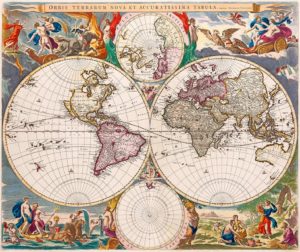Introducing Studio Mandarin 橘子中文

Dear The China Project readers,
“If you talk to a man in a language he understands, that goes to his head. If you talk to him in his language, that goes to his heart.”
— Nelson Mandela
In partnership with the China Institute, we’re delighted to launch Studio Mandarin 橘子中文, a show that teaches you Chinese based on our news and cultural reporting.
Transcript provided by Shenzhan Liao from China Institute
The Year of the Dog started on February 16, which, in Chinese, is 初一 (chū yī, the very first day), but traditionally the new year celebration in China lasts until the 15th day of the first month, or 元宵节 (yuán xiāo jié, the Lantern Festival).
Buddhist and Daoist temples have fairs throughout the Chinese new year, and on A typical celebration people traditionally would go to the local temple to solve riddles (猜灯谜 cāi dēngmí)written on lanterns. This year, the Lantern Festival falls on March 2, so there is still time to say to your Chinese friends “拜个晚年” (bài gè wǎn nián), to give a belated Happy New Year wish.
All of these dates are, of course, regulated by the Chinese lunar calendar, which has been around since the 14th century B.C., according to China’s oldest written records, characters scratched onto tortoise shells and other bones (甲骨文,jiǎ gǔ wén). It wasn’t until 1912 that the Western calendar was officially adopted in China.
In the United States, probably the most common form of greeting for the Lunar New Year is 恭喜发财 (gōngxǐfācái) in Mandarin, or “Kung Hei Fat Choi,” in its Cantonese pronunciation. It can be roughly translated as “Wishing that you make a fortune.”
According to 论语, the classic collection of the sayings of Confucius (479–551 B.C.), 恭 is similar to “respect” and 喜 equals “blessing.” Thus 恭喜 together literally means “a blessing with respect.” However, 恭喜发财 as a Lunar New Year greeting didn’t gain popularity until the early 20th century, after Westerners started regularly interacting with the immigrants from southern China, or Canton. Chinatowns all over the U.S. were first built by Chinese immigrants mostly from Canton, which probably explains why if there is only one Chinese Lunar New Year greeting known to Americans, it’s likely “Kung Hei Fat Choi.”
That said, it’s probably time to expand our vocabulary. Here are two we like: The first is 吉祥如意(jí xiáng rú yì), which can be translated as “Have an auspicious year as you wish.”
Another one is 恭贺新禧(gōng hè xīn xǐ): It essentially means “Wishing you a happy and auspicious new year.” (You can never get too much auspiciousness and happiness for the new year, right?)
Lastly, there is a fun expression just for the Year of the Dog, 狗年汪汪(gǒu nián wāngwāng). 汪 (wāng), the word that mimics the barking sound of a dog, “woof,” in Chinese, sounds the same as 旺 (wàng), the word for thriving. By saying 狗 (dog) 年 (year) 汪汪, you are wishing people a year of prosperity.
So the Lantern Festival 元宵节 is coming on March 2 this year, and by then, the Chinese Lunar New Year celebration will officially conclude. Before that day, we can still say:
吉祥如意,恭贺新禧!





